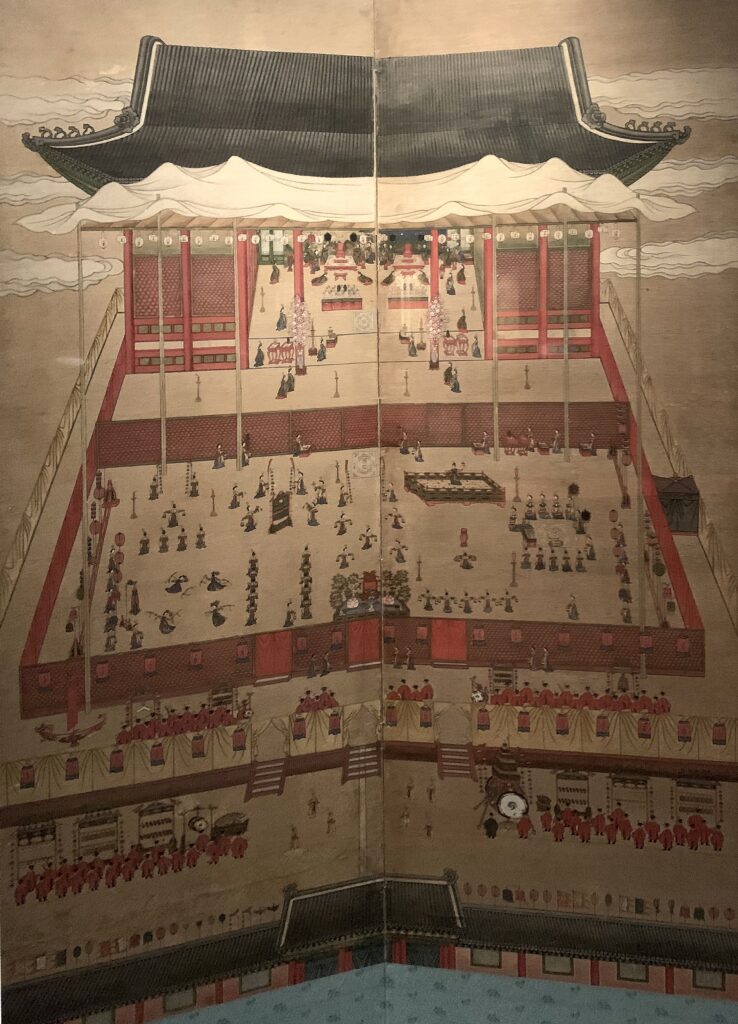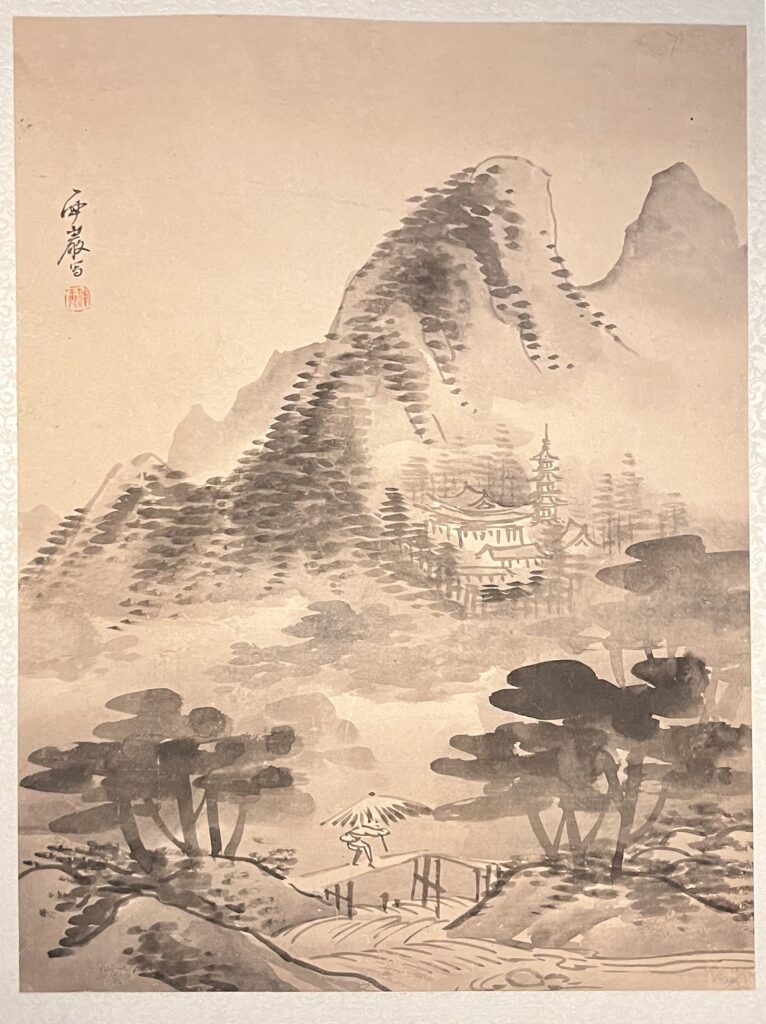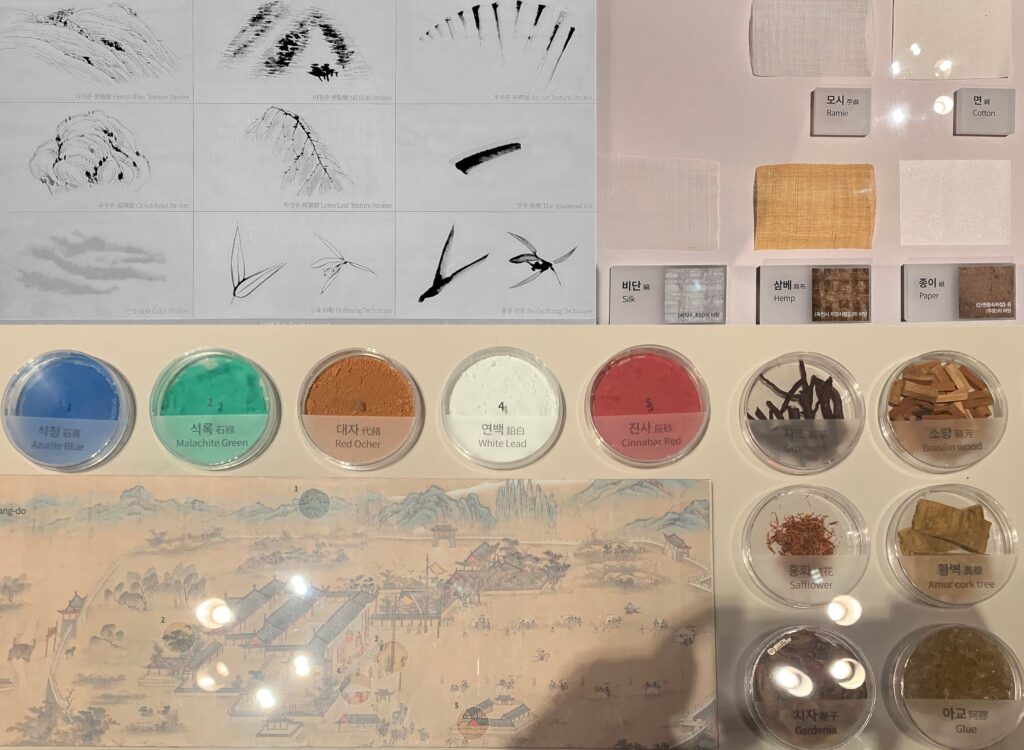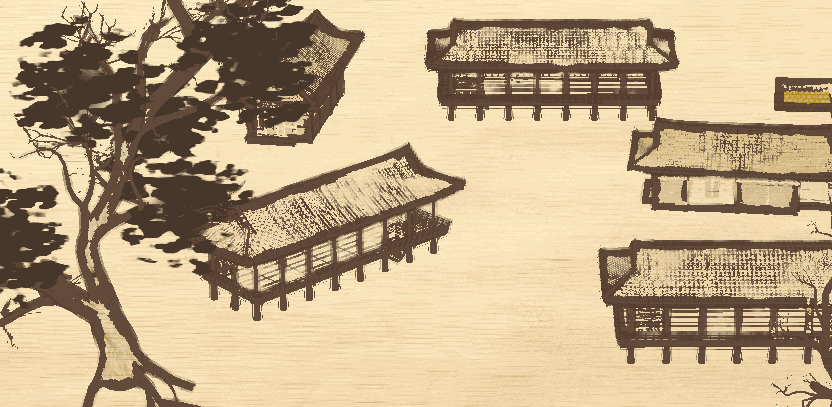Heya friendos! It’s been a week since I returned from my vacation to the other side of the planet. Of course, it wouldn’t be a successful trip if I didn’t come back with a new game to make! Let’s talk about a bunch of art we’ve seen in South Korea and how that motivated me to get back into visual development.
How Am I Doing?
I’ve wrapped up sitting on my laurels, regained my normal sleeping schedule, and have been struck with a jolt of inspiration. While in Seoul, we visited the National Museum of Korea. It’s a huge building with many exhibitions from all around the world and a permanent collection of diverse Korean artifacts, ranging from lacquered shogi boards to decorative roof tiling. We specifically wanted to visit to check out an exhibition on Joseon dynasty artwork.
The first piece that struck me as interesting, was painted on a foldable screen. As in China and Japan, at this time it was common to use foldable screens to divide rooms into separate spaces. Oftentimes, these screens would be decorated with beautiful landscape paintings or floral patterns. This one, however, exists as a sort of official record of a royal banquet in the Imjin year. It details which nobles were present and what kind of lavish entertainment was provided. Each panel of the eight panels describes a different phase of the procession.

The photograph does not do it justice, but I was immediately enthralled by this piece. The characters are tiny and simplistic, but I could almost see them dance on the screen and hear them murmur among each other. The perspective is interesting as well; not bothered by realism, instead opting for a clear overview of the procession while retaining the grandiosity of the palace.
This is where I first noticed a trend in traditional Korean art: the composition leaves breathing space for different scenes to be easily incorporated into each artwork. Instead of cohesively creating a single scene, and painting every little detail and surface, these pieces allow the viewer to digest multiple scenes easily by not overcrowding the canvas.
Because of that, I could easily envision a little character walking around these palace grounds, enjoying the revelry. And that of course, is the very seed for a game idea. Another piece compounded that feeling.

A lot of works like these were made by poets and caligraphers, who focused on brushwork with ink. You can see how the different shades and textures of the ink as well as the whitespace create this beautifully atmospheric piece. I can almost see the trees sway gently in the wind, even though they are so simplistic in their shape and style.
What Am I Doing?
Before leaving on this trip, I was messing around with a prototype for a game idea I had. I’ll get into the details of it in a later newsletter, but let’s just say an art style like that perfectly fits what was percolating in the back of my mind. So as soon as we got back home, I wanted to go about doing some style tests.
As some of you know, I used to be a technical artist. Whenever I see an interesting style like that, I tend to think about how I can approximate that via code, as opposed to learning to master this style physically. Usually, that requires a lot of research: similar existing effects, materials the artists used, color restrictions, and of course, studying many of the artworks themselves.
Luckily, half the work was already done! The museum featured in-depth explanations of the painting techniques, pigments, and types of canvases they used in that period. What’s more, is that I found a cultural institute that has free 3D models of many historical objects, so I can easily kitbash a scene together. I could not have been more chuffed to get to it!

Now, I’m still in the early stages of developing this style, but having this information ready before even setting foot back on French soil rapidly kickstarted the process. This is what I have so far. It’s quite messy, especially when moving the camera around. I’m also struggling with getting the shades of ink to vary naturally, so everything looks a little too homogenous. But, not a bad start!

Why Am I Doing? (this)
As of yet, I do not know if this is a project that will materialize or if it’s just a flight of fancy. That being said, I’m happy to ride out the wave of inspiration that washed over me. Join me next week for a more in-depth look into what this new project is!
